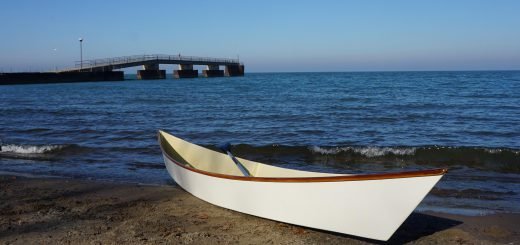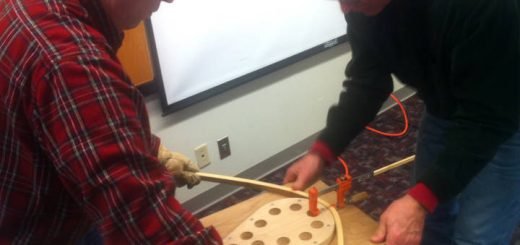Moving from Green Wood to Dry Wood: A Presentation by John Bridges

Speaking with a warm British accent that is still with him after spending much of his life in other parts of the world, John Bridges shared his technical knowledge accumulated from a career covering wood harvesting, drying and fabricating.
A fundamental starting point in understanding wood is to understand its cellular structure. John pointed out that wood cells in green or living wood when looked at microscopically are hollow and long, much like a soda straw. The hollow center of the straw is filled with a watery mixture called sap and the fibrous walls of the cell are also saturated with water. When the wood is harvested, moisture must be removed from both the center of the cell and the cell walls in order to make it stable for use.
[pullquote-left]As wood dries it reaches an equilibrium point at which it retains an amount of moisture equal to the moisture carried in the air of its environment.[/pullquote-left] In our part of the world, Ohio, a temperate climate zone, wood left outdoors will be have a moisture content of about 12 – 15%. John gave the example of wood being moved along the coast of Chile where in the area of a rain forest at the base of the Andes, the ambient moisture content may be stable at 28%. If the wood is moved northward to the desert regions the same wood may further dry out under the influence of dry air and stabilize at 4%. If the drying process is done too quickly, the cell walls shrink unevenly putting stresses on neighboring cells and cracks develop.
Moisture content is a useful measure for knowing how stable a wood will be for its intended use. Anyone with a small scale such as a postage scale can compute moisture content by first weighing the wood sample and then after drying the sample in an oven or microwave, weigh the sample again. To compute the residual moisture content, subtract the dry weight from the wet weight. Divide the number by the dry weight, and multiple by 100 to get the percentage moisture.
There are a few different ways that moisture can be removed from green wood. A common method is air-drying. In this method, green wood boards are laid upon stickers, (wood slats) and stacked with a sticker between each board to keep them separated. Air can freely circulate around each of the board faces to draw moisture away. As the surface dries, it wicks moisture from inner cells to the surface. The moisture is drawn out in two steps. First the circulating air draws moisture from the cell wall fibers. Second, the sap from the cell cavity moves into the cell wall fibers to replace the drawn away moisture and it in turn is pulled out of the fibers by the circulating air. In our climate, it may take a year for the wood to dry and reach its environmental equilibrium moisture content.
To move the process along much quicker, the wood can be kiln dried. The stacked and stickered pile of wood can be moved into a kiln, an enclosed space in which the humidity can be controlled by modifying the temperature and amount of air circulated by blowers. Under the watchful eye of experienced technicians, the wood can be dried in a matter of days to the moisture content specified for its intended use. Home woodworkers can improvise their own kiln using fans and de-humidifiers or air-conditioners.
John mentioned another drying method from the past. Green wood had been dried by burying the timbers in animal dung. The dung chemically reacted with the moisture of the wood drawing it out and drying the timber.
Wood moisture meters can be used to measure the moisture content of wood. These instruments use a probe with two nail-like prongs that when jammed into the wood, measure the ability of the moisture in the wood to conduct electricity. Dry wood has little moisture and therefore is a poor conductor of electricity and minimally deflects the meter needle. Green wood having much more moisture is a better conductor and deflects the needle more. The scale of the meter is calibrated to read the percentage moisture content. The key to using the device is to get the prongs to penetrate beyond the dry surface into the interior so an accurate measurement can be taken. The prongs should also be aligned parallel to the grain of the wood. If a large timber needs to be measured, spikes can be driven into the interior of the timber and used as prong extensions.
John’s presentation gave the audience a much better understanding of the cellular structure of wood and how the water in green wood is removed. We’ll have to wait for another time to hear more about the twenty some boats John has built in different parts of the world. Made of wood, of course.





